Protecting and Winterizing Your Potted Trees: A Guide
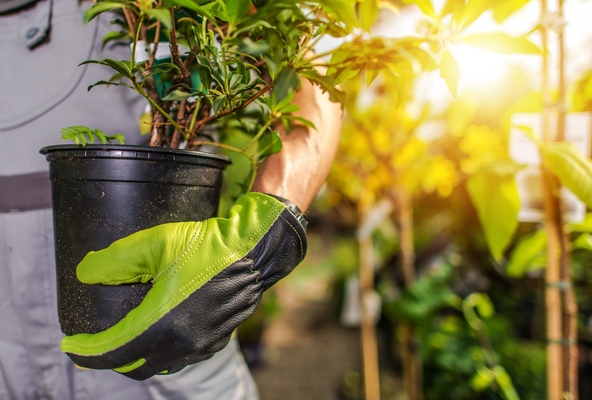
Introduction
As the winter season approaches, the health and vitality of your potted trees become a primary concern. Potted trees require special care to endure cold, harsh conditions. In this comprehensive guide, we provide you with expert advice and insights on how to effectively protect and winterize your potted trees, ensuring they remain safe and healthy during the colder months.
The Importance of Winterizing Your Potted Trees
Potted trees, whether ornamental, fruit bearing, or evergreen, need extra attention during the winter. Unlike their in-ground counterparts, potted trees have their roots exposed to the harsh winter elements, which can lead to various issues if not properly addressed.
The advantages of winterizing your potted trees are numerous:
- Preventing Root Damage: Shielding the roots from freezing temperatures is vital in preventing root damage and maintaining tree health.
- Preserving Nutrient Reserves: Winterization helps potted trees conserve energy and nutrients, ensuring they have the resources necessary for healthy growth in the coming seasons.
- Sustaining Aesthetic Appeal: For those who grow ornamental trees, proper winterization ensures that your trees maintain their visual appeal, even in the winter months.
- Ensuring Fruit Production: If you have fruit-bearing trees, winterizing them guarantees that they can continue to produce fruit in the coming year.
Effective Strategies to Protect Your Potted Trees This Winter
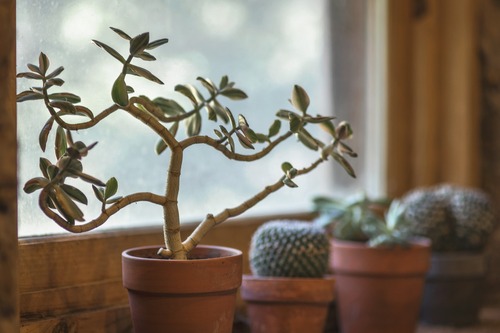
An Indoor Bonsai Tree
Now, let's explore various methods to shield your potted trees from the winter's chill:
Storing in a Suitable Indoor Location
One of the most effective ways to protect your potted trees from winter's harsh conditions is to bring them indoors. If you have a space available that maintains a temperature between thirty and forty degrees Fahrenheit without freezing, it's an excellent option for certain tree species. However, it's essential to consider your specific tree's requirements, such as sunlight and warmth needs, before making this decision. Different trees have distinct indoor preferences, so be sure to research and provide the right conditions.
Additional Information: When transitioning your potted trees indoors, consider factors like light exposure and humidity. Adequate sunlight is crucial, so place them near well-lit windows or use artificial grow lights if necessary. Maintain proper humidity levels by misting the trees or using a humidifier to mimic their outdoor environment.
Alternative options may include your garage, shed, or even bringing them directly into your home, depending on your home layout and the types of trees you're caring for.
Additional Information: Garages and sheds can provide a controlled environment for your potted trees while protecting them from freezing temperatures. If you decide to bring your trees indoors, ensure they have sufficient space and access to light. Proper spacing will prevent overcrowding and ensure air circulation.
Temporarily Planting the Tree
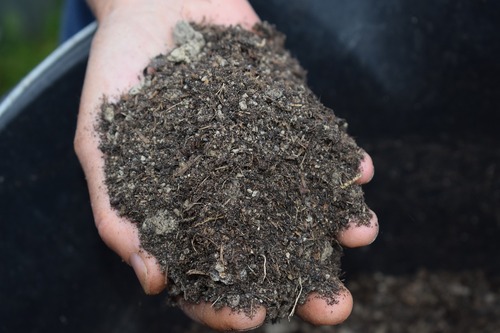
Healthy Soil Can Help Safeguard Your Potted Trees
For those with extra yard space and an additional tree, consider temporarily planting your potted tree in the ground. Ensure you provide proper insulation, such as leaves or mulch, to shield it from the cold.
Additional Information: Temporary planting is an excellent choice for trees that are marginally cold hardy in your region. By placing them in the ground and providing adequate insulation, you can mitigate the risk of winter damage. However, ensure you have enough space in your yard and a proper transplant plan for when warmer weather returns.
Providing Additional Warmth
Another effective method to protect potted trees during the winter is to provide them with extra warmth while keeping them outdoors. However, this option depends on your local climate and your tree's tolerance for colder temperatures. To do this:
- Select an insulating material such as straw, mulch, or leaves.
- Surround the potted tree with a chicken wire fence, creating a protective barrier.
- Stuff the enclosed area with your chosen insulator to shield the tree's roots from extreme temperature drops and freezing.
Ensure that the insulating materials, whether mulch, straw, or leaves, are not excessively damp or wet, as this can lead to tissue rot and damage your trees.
Additional Information: Proper insulation is essential to protect potted trees from frost and extreme cold. Mulch, straw, and leaves create a layer of protection by trapping heat and preventing rapid temperature fluctuations. When selecting insulating materials, make sure they are dry to avoid potential damage to the tree.
Winter Watering
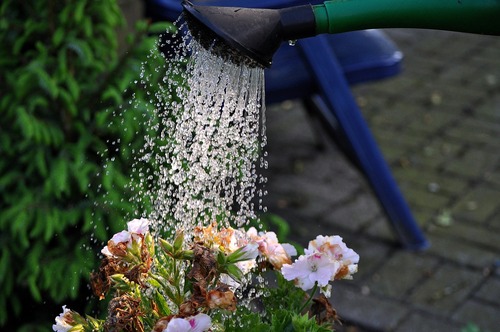
Proper Watering of Container Plants is Vital
While many believe that trees need less water in winter, it's important to note that potted trees still require moisture, especially if your region experiences dry winters. Cold temperatures can reduce the tree's ability to access water from the frozen soil. To ensure your potted trees stay healthy during winter, consider the following winter watering tips:
- Water Sparingly: Reduce the frequency of watering during winter, but when you do water, do so thoroughly. Water in the morning when the temperatures are milder to allow the excess moisture to be absorbed before nighttime, preventing potential freezing.
- Monitor Soil Moisture: Check the soil moisture regularly by inserting your finger about an inch into the soil. If it feels dry, it's time to water. Avoid overwatering, as excessive moisture can lead to root rot.
- Use a Watering Schedule: Create a consistent watering schedule based on your tree's specific needs and the local climate. Be flexible and adjust the schedule based on weather conditions.
- Mulch for Moisture Retention: Applying a layer of mulch around the base of your potted trees helps retain moisture and insulation. Mulch acts as a protective barrier, reducing the risk of rapid freezing.
Additional Information: Winter watering is critical to prevent your potted trees from becoming dehydrated, which can lead to stress and potential damage. While they require less water in winter than during the growing season, it's important to provide them with adequate moisture to sustain their health.
Monitoring Tree Health During Winter
As winter progresses, it's essential to keep a close eye on the health of your potted trees. This vigilance can help you identify any issues early on and take corrective action, ensuring your trees survive the winter with minimal damage.
- Leaf and Branch Examination: Regularly inspect the leaves and branches of your potted trees. Look for any signs of discoloration, wilting, or damage. If you notice any of these issues, it may indicate stress or disease, and you should address them promptly.
- Pest Control: Winter doesn't mean pests have disappeared entirely. Some insects and rodents may seek shelter in or around your potted trees. Check for signs of infestations, such as chewed branches or leaves. If you suspect a pest problem, consult with a professional pest control service for safe and effective solutions.
- Soil Assessment: Even in winter, soil conditions play a crucial role in tree health. Ensure that the soil around your potted trees is not overly compacted, which can impede root growth. You can use a soil auger or probe to assess soil density and take steps to improve aeration if needed.
- Snow and Ice Removal: If your region experiences heavy snow or ice storms, be cautious when clearing snow from your trees. Gently remove excess snow to prevent the weight from bending or breaking branches. Avoid using salt or de-icing chemicals near your potted trees, as these can be harmful to their roots and foliage.
By monitoring your trees throughout the winter, you can address potential issues promptly and adjust your care routine as needed, ensuring your potted trees remain healthy and resilient.
Planning and Prepping for Spring
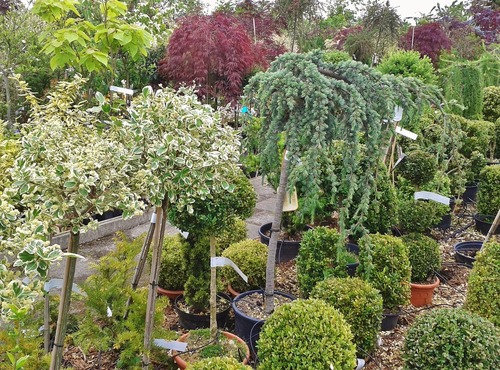
A Garden of Healthy Potted Trees
As winter gives way to spring, it's essential to start planning for the transition. Here are some steps to consider:
- Inspect Your Trees: Once the worst of winter has passed, examine your potted trees for any signs of damage or stress. Look for broken branches, discolored leaves, or other issues that may have occurred during the winter months.
- Pruning and Maintenance: Spring is an excellent time to prune your potted trees. Remove any dead or damaged branches and shape your trees for the coming growing season. Ensure that your trees have adequate space and access to sunlight.
- Replanting: If you temporarily planted a potted tree in the ground, consider the right time to replant it back into its pot or choose a permanent location. This step is crucial for the health and growth of your tree.
- Fertilization: As spring arrives, consider providing your potted trees with a balanced, slow-release fertilizer. This will help them regain their strength and support healthy growth.
- Monitor Watering: Adjust your watering routine as temperatures rise. Potted trees may require more frequent watering in the spring, especially as they enter the active growing season.
By taking these steps to prepare for spring, you'll ensure that your potted trees have the best possible start to the growing season.
Some Extra Tips
Here are some final tips for your potted trees:
- Pots made of fiberglass, wood, or metal are more likely to protect your tree from freezing. Those made from porous materials like terra cotta will not be as protective.
- Place outdoor potted trees on soil, rather than concrete. Doing this will ensure that there aren’t drastic temperature changes going from day to night.
- Group potted trees together—this is best done on either the east or north side of your home, with the strongest trees protecting and surrounding the weaker ones.
Contacting Professionals About Your Winter Tree Care
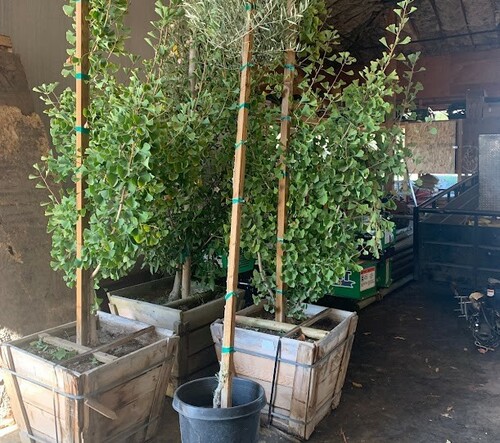
Potted Trees Stored Safely Indoors for Winter
If you're located in the San Francisco Bay Area and require expert assistance with winter tree care, don't hesitate to reach out to Arborist Now. With our extensive experience and knowledge, we can provide the guidance and services you need to ensure your potted trees thrive through the winter season.
Conclusion
By following these comprehensive tips and seeking professional guidance, you can effectively protect and winterize your potted trees, ensuring they remain healthy and vibrant throughout the colder months. Make sure to tailor your approach based on your specific tree types and local climate, and always prioritize the well-being of your beloved potted trees. With the right care, your potted trees will thrive through the winter and reward you with beauty, fruit, or shade in the seasons to come. Remember, a little extra effort in winterizing your potted trees can go a long way in preserving their health and ensuring their continued vitality, ensuring you'll enjoy their beauty and benefits for years to come.
Originally posted on January 2, 2020





